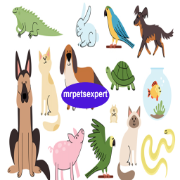Cat Tail Body Language
Cats can convey their emotions in various ways even if they cannot talk. Using cat tail language is one method. Your cat's tail may provide you a lot of information about how at ease or nervous he is, as well as whether he needs some space and your backing. Gaining an understanding of your cat's body language by reading its tail can help you respect his wants and take action to make him comfortable. If you pay close attention to your cat, you should be able to see some of these tail indicators, but it could take some getting used to at first.
Discovering the meanings buried in your cat's tail language will strengthen your relationship and make you a more aware and understanding cat parent, regardless of how long you've had cats or how curiously you've just entered the world of feline friendship.
More for you Cats and Water: Tips for Bathing and Hydration
The Basics of Cat Tail Language
- Straight up and quivering: Unraveling the excitement
- Puffed-up tail: A sign of alarm
- Wrapped around the body: Seeking comfort and security
Positive Signals
A cat's tail can convey positive emotions as well. Pay attention to:
- Upright and vibrating: Expressing joy and anticipation
- Slow, graceful movements: Indicating contentment
- Gentle flicking: A friendly greeting
Negative Signals
On the flip side, certain tail behaviors may signify discomfort or distress:
- Swishing aggressively: A warning sign
- Fluffed-up and thrashing: Defending territory
- Rapid side-to-side movement: An agitated state
Tail Positions and Meanings
- High and straight: Confidence and happiness
- Low and puffed: Fear or submission
- Curved tip: Playful and relaxed
Cat Tail Language and Emotions
Understanding the connection between tail language and emotions is crucial:
- Happiness and contentment: A relaxed, flowing tail
- Fear and anxiety: Puffed-up tail or tucked between the legs
- Aggression and irritation: Swishing or lashing tail
Interpreting Tail Puffs and Fluffs
- Signs of fear: Identifying defensive postures
- Defensive postures: Understanding the need for space
How to Respond to Cat Tail Cues
- Positive reinforcement: Acknowledging positive behavior
- Avoiding triggering situations: Minimizing stress for your cat
- Seeking professional help: Consulting a vet or animal behaviorist
Common Misinterpretations
- Tail wagging in dogs vs. cats: Recognizing the differences
- Breed-specific variations: Tail language nuances
- Individual differences: Every cat is unique
Practical Tips for Cat Owners
- Observing tail language during playtime: Enhancing the bond
- Tail signals during grooming: Ensuring a positive experience
- Monitoring tail cues in multi-cat households: Promoting harmony
- Thank you for reading Cat Tail Body Language












No comments:
Post a Comment